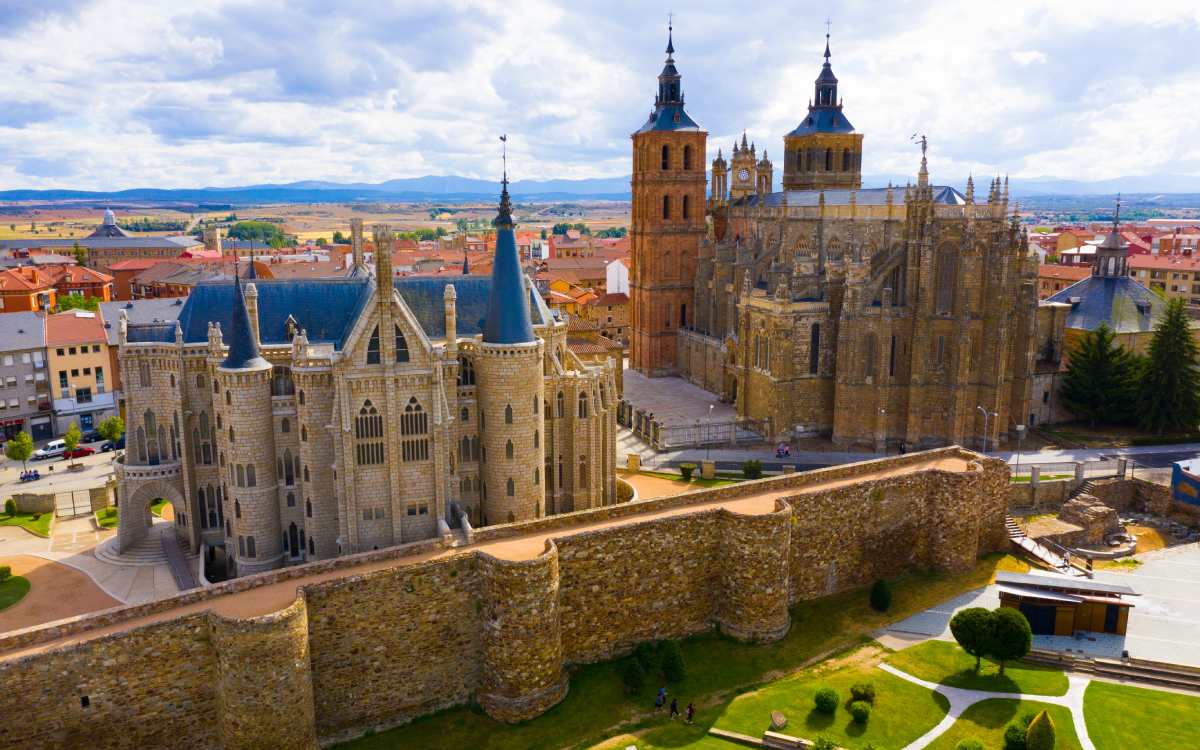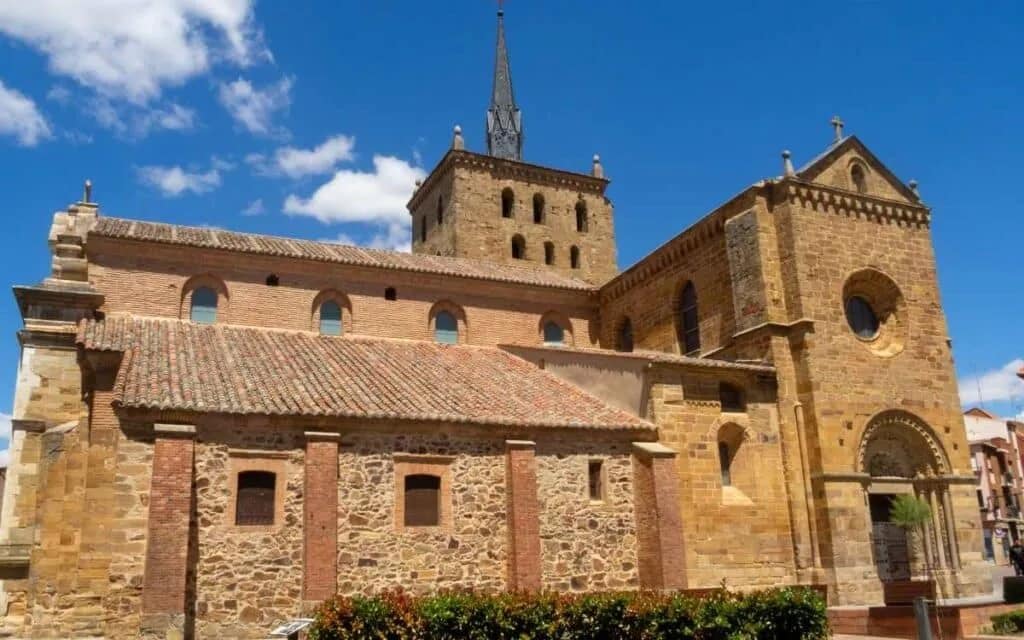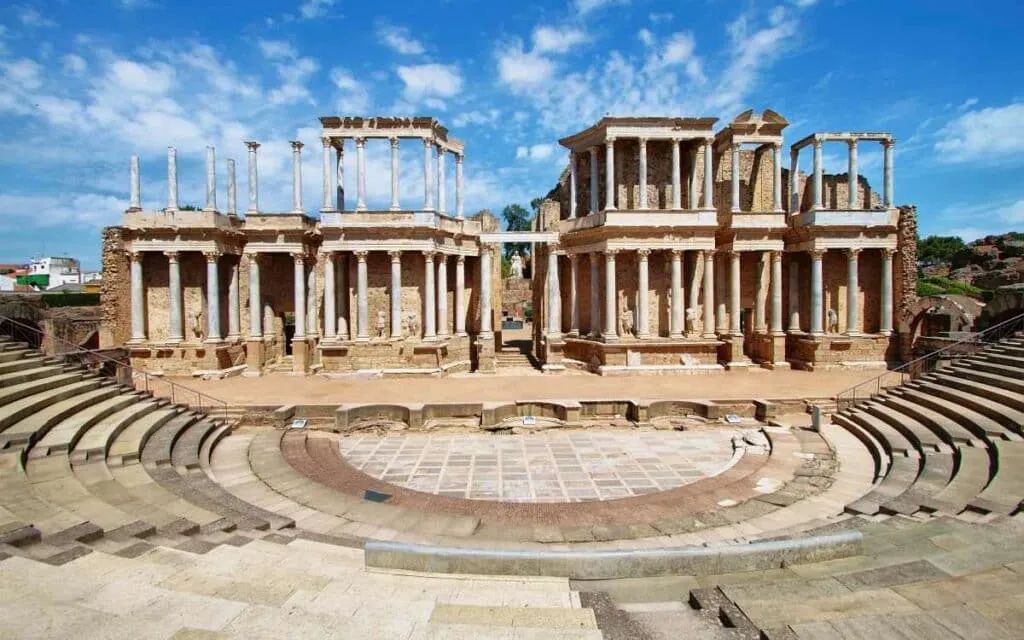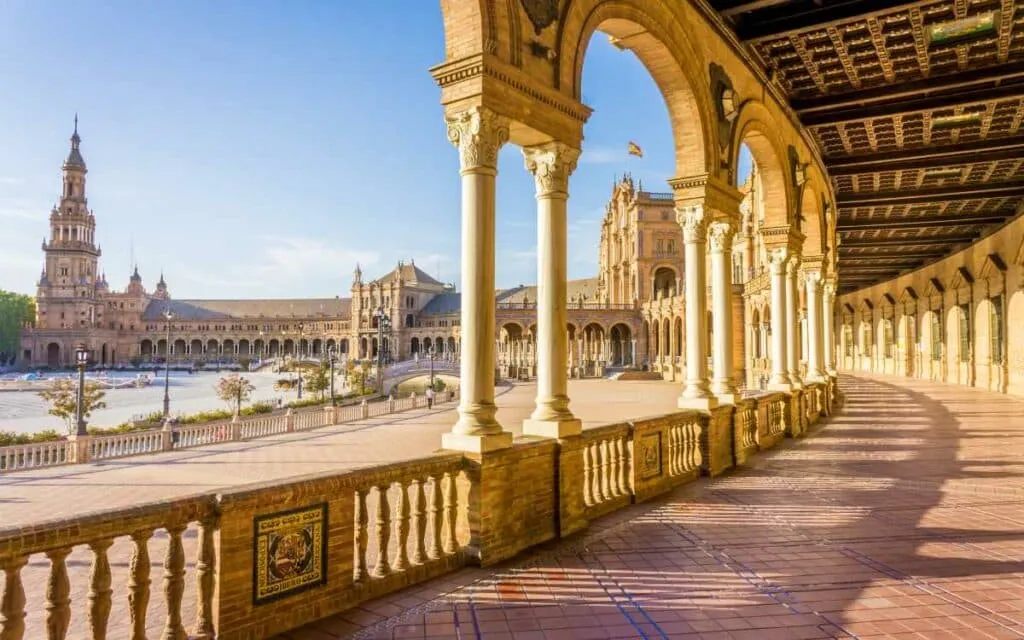
A route through Spain from north to south. Discovering its monumental cities, natural landscapes, diverse gastronomy and ancient culture. It sounds perfect, doesn’t it? That’s what you can experience thanks to Vía de la Plata, a route created in the Roman era, turned into A-66, a major highway that links Gijón to Sevilla. Nowadays, it has turned into the Iberian Route 66, a road trip full of history and tourism.
The combination of history, culture, nature, and gastronomy make Vía de la Plata a memorable experience which will show you the best of Spain.

Map of Vía de la Plata. | Google Maps
Vía de la Plata used to be a Roman road that linked the cities of Mérida and Astorga, passing through Sevilla, Cáceres, Salamanca and Zamora. It owes its name to its old purpose – it was used to transport precious metals from southern mines to the north of the peninsula.
However, it wasn’t only utilised for commercial purposes, but also for military and administrative tasks. It allowed control and communication between the different Roman provinces.
These days, Vía de la Plata has turned into a tourist route whose original layout has adapted to the current traffic conditions. You can do this route either by car or motorbike, or by bicycle or on foot, since it’s also part of the Camino de Santiago. It’s 800 kilometres long in total which can be covered in a single journey or in a few days, depending on the chosen means of transport and your pace.
Cars and vans are the best choices to transit the Spanish Route 66, but they are not your only option.
Taking a guided tour by bus is a great choice as well. They are organised by tourist agencies. You can choose between many itineraries and the duration of the tour, which usually include transport, accommodation and half or full board.
If you prefer your bicycle, you will have to complete the tour in several stages. The same applies if you choose to walk. Aside from the obvious physical effort and the fact that the route is carefully signposted, maps, tracks and information on the itinerary are indispensable.
Vía de la Plata is a route that offers a broad range of attractions for every age and taste. Cities with a rich historic and artistic heritage, charming villages full of tradition, natural parks, biosphere reserves, reservoirs, rivers, mountains, valleys… These are only some of the things you will encounter on your journey.
The route is also a great opportunity to enjoy the typical gastronomy of each area, based on great local produce of good quality and the influences of other cultures.
Let’s discover some of the places on the Spanish Route 66 that you can’t miss.

Gijón. | Shutterstock
Depending on where you start, Gijón will be the starting or ending point of the Iberian Route 66. The Asturian city offers the possibility of enjoying its beaches or tourist attractions such as Universidad Laboral, Palacio de Revillagigedo, Casa Rosada, Elogio del Horizonte or a mere walk through Barrio de Cimadevilla. You should also drink some sidra and taste the typical products of the area in any of its many bars and restaurants.

León. | Shutterstock
The capital of the old Kingdom of León is a small city with a large history and tradition and plenty of places to visit. Catedral de Santa María, Real Colegiata de San Isidoro, Convento de San Marcos (currently known as Parador Nacional) or Museo Casa Botines Gaudí are some of them.
You can’t forget about Barrio Húmedo when you visit León. Here you’ll be able to taste some local dishes from its traditional gastronomy based on local products.

Astorga. | Shutterstock
Actually, this city in León isn’t part of the A-66, but it’s the ending or starting point of the old Vía de la Plata, depending on what you choose. Astorga is a place full of history. It once was episcopal see and the capital of the Roman province of Asturica Augusta.
Some of its most outstanding monuments are its Gothic cathedral, the Palacio Episcopal designed by Gaudí, the Roman walls, Museo del Chocolate and Plaza Mayor.
It is also famous for its cocido maragato, a typical recipe you should eat “in reverse”: the meat is the starter and the soup is the main course. That is the opposite of the typical cocido.

Iglesia de Santa María del Azogue, Benavente. | Shutterstock
Its importance as a crossroad turned this city in Zamora into a strategic location in different historical periods.
This influence was witnessed by many religious and civil buildings, such as Iglesia de Santa María del Azogue with its five apses, Hospital de la Piedad for pilgrims, Torre de Caracol (turned into Parador Nacional) or Plaza Mayor.

Zamora. | Shutterstock
This Romanesque city is another of the many wonders of Vía de la Plata. There are more than 20 Romanesque churches in Zamora, as well as a castle, a cathedral, a medieval bridge and its Plaza Mayor with soportales.
It is also known for its Semana Santa, the Holy Week, declared an International Tourist Interest, and for its gastronomy – cheese, roasted lamb and Toro wines stand out.

Salamanca. | Shutterstock
The university town par excellence is a mandatory stop of Vía de la Plata. Salamanca’s Plaza Mayor is considered one of the most beautiful squares in the world. Here you will also find a new cathedral and an old one, a more than 800-year-old university, iconic façades like the one of Casa de las Conchas and Convento de San Esteban, where Christopher Columbus stayed.

Cáceres. | Shutterstock
This city in Extremadura has an exceptional town centre that became a World Heritage Site in 1986. Cáceres preserves a medieval and Renaissance monumental complex that is unique in Spain. Its walls, towers, palaces and churches remind of its splendorous past.
In addition, Cáceres is famous for its gastronomy, composed of products like torta del Casar cheese and migas extremeñas.

Teatro Romano de Mérida. | Shutterstock
Extremadura’s capital is an authentic gem of Roman art, declared World Heritage Site by UNESCO in 1993. Its impressive Teatro Romano, the bridge over Guadiana river, Templo de Diana, Arco de Trajano and Acueducto de los Milagros are some of its most oustanding monuments.

Plaza de España, Sevilla. | Shutterstock
Andalucía‘s capital can be the starting or ending point of this route. Sevilla is a city of great beauty and character, where the Arab, Jewish and Christian legacies become one.
Some of Sevilla’s mandatory stops are its representative Giralda, its fascinating Alcázar, its picturesque Santa Cruz neighbourhood, its lively Plaza de España and its emblematic Torre del Oro.
You can also read this article in Spanish here.